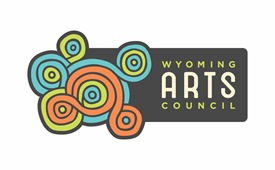The Wyoming Arts Council and Wyoming Humanities are seeking tracks and podcasts from Wyoming-based musicians and podcasters for the 2026 Wyoming Road Trip Playlist.
The application deadline is Jan. 26, 2026, at 11:59 p.m. Submissions must include direct Spotify links. Each applicant may submit up to two entries in either category.
Hosted on Spotify, the Wyoming Road Trip Playlist offers a curated soundtrack for travelers exploring the state’s scenic byways, parks, cultural sites, and historic landmarks. Distributed at visitor centers, museums, State Parks, and summer festivals, the playlist helps introduce Wyoming-based musicians and podcasters to thousands of residents and tourists each year. The project blends music, storytelling, and place-based inspiration, showcasing the depth and diversity of Wyoming’s independent creative community.
This is a statewide call open to independent musicians of all genres and producers of compelling storytelling podcasts. To be eligible, musicians and podcast producers must reside in Wyoming. If part of a band or podcast production group, at least 50% of the team must reside in Wyoming.
The playlist is part of the Wyoming Independent Music Initiative (WIMI), which supports Wyoming’s independent music scene, helps venues host live music, and strengthens community connection and livability statewide. Through partnership with Wyoming Humanities, the program promotes and sustains the arts and culture of Wyoming.
DETAILS
- Individual musicians and podcasters must be Wyoming residents; the majority of the members of bands/musical acts must be Wyoming residents (Residency defined as domiciled within the state borders for a total of 20 months in the previous two years.).
- Each applicant may submit only one entry. Artists who perform both solo and as part of a band must choose one act to represent in their submission. Multiple entries from the same individual under different artist names will not be accepted.
- The following will be taken into consideration in the jurying process: artistic merit and quality of the recording.
- Artists will need to submit through the Wyoming Arts Council's Submittable page no later than Monday, January 26, 2026 at 11:59 pm MST.
- You must submit links to specific songs and podcasts already listed on Spotify.
- Links to an album or general artist page on Spotify will not be reviewed.
- Links to anything other than a specific song or podcast on Spotify will not be reviewed, except in the case of forthcoming albums, EPs, or singles. We will accept a link to an embargoed recording on the understanding that the song will be available to the public on Spotify no later than June 3, 2025.
- You may submit up to two songs or podcasts for consideration.
- If your music was previously listed on a Wyoming Road Trip Playlist, you are welcome to apply again this year, but songs previously listed as a part of a Wyoming Road Trip Playlist will not be considered.
The Wyoming Office of Outdoor Recreation (WYOREC), Wyoming Arts Council (WAC), and Wyoming State Parks (WSP) seek four Wyoming-based musicians to perform intimate, unplugged concerts in scenic outdoor settings during the summer of 2026.
In its second year, Tunes on the Trail was created in partnership with the Wyoming Office of Outdoor Recreation, the Wyoming Arts Council, and Wyoming State Parks. This initiative combines live acoustic music with outdoor adventure, providing audiences with a unique experience in Wyoming’s scenic state parks.
Four Wyoming-based artists will be selected to perform their own acoustic concert at one of the designated Wyoming State Parks or State Historic Sites between June and September. Each unplugged performance will showcase a different Wyoming musician and include an outdoor recreation component before the concert. Each selected artist will perform a 90-minute set and will receive $550 for their performance.
Please apply by the deadline of February 6th, 2026, at 11:59 p.m. Additional information is available on the Wyoming Arts Council website.
DETAILS
- Artists must be Wyoming Residents;
- Must be able to perform live;
- Must be able to perform unplugged;
- Artists will be required to host a 90 minute set;
- Sets should be accommodating to all ages (family friendly);
- Each selected artist will receive a $550.00 performance payment;
- Artists will be able to select their preferred locations in the application;
- The following will be taken into consideration: live performance ability, geographical location to participating State Park sites or ability to travel, and professionalism of materials submitted;
- Selected artists will be required to collaborate on social media posts, including pre-event promotion, one event announcement reel, and day-of on-site content;
- Participation in the hike/recreational component is not required, but encouraged.
LOCATION & DATES OF EACH PERFORMANCE
June 6, 2026: Guernsey State Park
July 11, 2026: Seminoe State Park
August 15, 2026: South Pass City State Historic Site
August 22, 2026: Hot Springs State Park
Performance times will be coordinated between the artists and the state park/historic site once selections have been made.
This program is supported and funded through the Wyoming State Parks and Cultural Resources Spark Tank! and is part of the Wyoming Arts Council’s Wyoming Independent Music Initiative (WIMI) to help artists perform and tour, building their audiences and reach. If you have any questions about the application process, please contact Kimberly Mittelstadt, Creative Arts Specialist for the Wyoming Arts Council, at kimberly.mittelstadt@wyo.gov or 307-274-6673. Additionally, for any program inquiries, please feel free to reach out to Jamie Hansen, Outdoor Recreation Specialist with Wyoming Outdoor Recreation, at jamie.hansen@wyo.gov or 307-460-8794.
